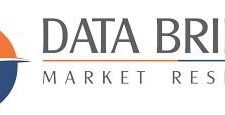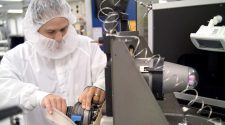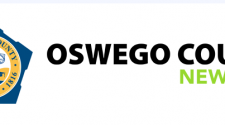Image source: The Motley Fool.
Aspen Technology Inc (NASDAQ:AZPN)
Q2 2021 Earnings Call
Jan 27, 2021, 4:30 p.m. ET
Contents:
- Prepared Remarks
- Questions and Answers
- Call Participants
Prepared Remarks:
Operator
Ladies and gentlemen, thank you for standing by, and welcome to the Second Quarter Fiscal 2021 Aspen Technology Earnings Conference Call. [Operator Instructions] Please be advised that today’s conference is being recorded. [Operator Instructions]
I would now like to hand the conference over to your host today, Karl Johnsen, Chief Financial Officer. Please go ahead.
Karl Johnsen — Chief Financial Officer
Thank you. Good afternoon, everyone, and thank you for joining us to discuss our financial results for the second quarter of fiscal 2021 ending December 31, 2020. I’m Karl Johnsen, CFO of AspenTech, and with me on the call is Antonio Pietri, President and CEO.
Before we begin, I will make the Safe Harbor statement that during the course of this call we may make projections or other forward-looking statements about the financial performance of the Company that involve risks and uncertainties. The Company’s actual results may differ materially from such projections or statements. Factors that might cause such differences include, but are not limited to, those discussed in today’s call and contained in our most recently filed Form 10-Q.
Also, please note that the following information relates to our current business conditions and our outlook as of today, January 27, 2021. Consistent with our prior practice, we expressly disclaim any obligation to update this information.
The structure of today’s call will be as follows. Antonio will discuss business highlights from the second quarter and then I will review our financial results and discuss our updated guidance for fiscal year 2021. With that, let me turn the call over to Antonio. Antonio?
Antonio Pietri — President and Chief Executive Officer
Thank you, Karl. And thank you all for joining us today. We hope all of you and your families continue to be safe and healthy. Let’s start by looking quickly at our financial results for the second quarter.
Revenue was $233.7 million, supported by the largest dollar amount of quarterly renewals in the fiscal year. GAAP EPS was $1.89 and non-GAAP EPS was $2.04. Annual spend was $604 million, up 1.3% in the quarter and 7% year-over-year, and free cash flow was $38 million.
AspenTech’s performance in the second quarter was solid given the current economic environment and we remain on track to deliver a good year of growth in fiscal 2021. We continue to be confident in our ability to return to double-digit annual spend growth once economic conditions normalize.
In the second quarter we’re particularly pleased with our renewals performance in what was the largest renewals quarter in our history. Our customers continue to make substantial long-term commitments to AspenTech in a clear demonstration of our technologies’ strategic importance to their operations. One of the highlights of the quarter was signing one of our biggest ever licensed bookings transaction, a renewal for more than $75 million with one of the largest global oil companies.
From a growth perspective, our engineering and MSC suites delivered growth in line with our expectations, and the APM suite came in below plan. While our conversations with customers throughout the quarter were positive, we saw certain customers take a more conservative outlook on spending in late December that we believe was due in part to the recent wave of COVID-related restrictions in many parts of the world.
Overall, demand activity across our portfolio remains strong. We are engaged in strategic conversations with customers in all our target markets to expand their investments in AspenTech solutions to achieve critical business needs and enable their assets to run safer, greener, longer and faster.
In fact, our demand generation and top of sales funnel business activity are performing at levels similar to what we experienced prior to the onset of COVID. We believe this is a positive indication about the opportunity for strong growth in the second half of fiscal ’21 and beyond.
Based on our first half performance and current outlook for the second half of the year, we are tightening the range for annual spend growth to 6% to 8% compared to our previous range of 6% to 9%. As we laid out at the beginning of the fiscal year, we faced a higher degree of uncertainty in fiscal ’21 and a wider-than-normal range of potential outcomes. The underlying assumptions in our updated guidance include: APM will contribute 1.25 points of growth, down from 2 points; attrition in the upper half of the 5% to 6% range we provided at the beginning of the year.
It is important to note that we have already incurred a significant portion of our expected annual attrition in the first half of the year, given the timing of renewals. So we expect attrition will have less impact on annual spend growth in the second half of the year. We expect similar growth expectations for our engineering and MSC suites.
From a profitability perspective, we are increasing our free cash flow guidance to $265 million to $275 million, supported by strong collections and lower expenses. I would like to spend a few minutes providing an update on trends in each of our core markets.
Chemicals continued to show good resilience and was the best performance vertical for AspenTech in the quarter. Overall, we have seen a slow and steady improvement in the chemicals market with the segment benefiting from the current economic environment more than offsetting the parts of the industry that are facing challenges.
As we have discussed in the past, digitalization is a top strategic priority and consistent area of investment for chemical companies. Increasingly, this industry recognizes that it must operate in a more efficient and environmentally sustainable manner in order to remain competitive and viable in the long term. AspenTech solutions are mission-critical in achieving these objectives, which gives us confidence we will continue to generate consistent growth in this market.
To that end, we recently joined the Alliance to End Plastic Waste as an enabler company contributing capital, technology and expert resources. The AEPW organization is a global nonprofit focused on building a more sustainable plastic value chain to achieve its mission of ending plastic waste in the environment.
An example of the continued focus by chemical customers on digitalization and sustainability is the transaction signed with a North American chemical customer looking to maximize production and efficiency through optimal asset performance. After working with their digitalization group to evaluate our technologies, they selected Aspen ProMV to deliver more consistent quality, less waste, longer uptime and maintenance spend reduction, generating millions of dollars in annual benefits.
The refining business for oil and gas companies and the independent refiners continues to face a challenging business environment related to changes in travel patterns due to COVID. The reduced demand for gasoline and jet fuel has had a pronounced impact on demand, resulting in operating rates below their historical levels. Refining margins have improved recently from the lows experienced in the middle of calendar 2020, but are still below their historical trend.
We continue to have positive conversations with our refining customers, which remain committed to investing in digitalization technologies from AspenTech that will enable more efficient, agile and flexible asset operations in the future. We signed a number of transactions in the quarter with refinery operators that expand usage of our products and solutions across the different regions of the world for both our engineering and MSC suites. We are also encouraged by a growing trend we are seeing where MSC products and best practices continue to migrate from refining to the midstream and upstream businesses of our customers.
For example, a South American customer that is an important user of our Aspen PIMS-AO solution for refinery planning optimization identified significant benefits from deploying an enterprisewide planning optimization solution that extends from their refining assets to their upstream and midstream businesses to optimize the production and supply of crude oil in their operations. This enterprise planning optimization solution represents millions of dollars in incremental value capture in their logistics operations.
A second example is a Europe-based integrated oil company that is extending the use of Aspen DMC3 and Aspen GDOT solutions to their upstream facilities. This customer has a decarbonization strategy to reduce CO2 emissions in line with the United Nations 2030 objectives. We worked with the customer in its main European upstream and midstream facilities to demonstrate how advanced process control could help decrease production costs as well as CO2 emissions.
The pilot demonstrated a 15% reduction in CO2 emissions. As a result, the customer decided to roll out Aspen DMC3 and Aspen GDOT across their full site. A unique aspect of this pilot project was a remote deployment of our advanced control technology due to COVID restrictions.
Turning to the E&C market, our performance was as expected in the second quarter and first half of the year. Attrition levels have been in line with the range of expectations as these customers right-sized their agreements to reflect the current CapEx reality. We have a multi-decade history in the E&C market and have a very good understanding of its industry dynamics and how demand trends typically play out through economic cycles. We are confident in our ability to manage through the current environment while also being focused on emerging areas like third-party operations and maintenance services for brownfield assets.
In the APM area, the suite contributed 0.3 points of growth to annual spend through the first half of the year, which is behind where we expected to be at this point in the year. The Aspen ProMV product in this suite continues to increase its contribution to growth. As mentioned earlier, the challenging market backdrop for our customers and their focus on cash conservation has impacted our ability to close Aspen Mtell transactions and outweighed growing customer interest.
We remain confident this is a near-term dynamic based on our customer conversations and pilot completions and a significant value and success existing customers are having with their APM deployments. We continue to have a strong APM pipeline that includes a record number of in-flight or completed Aspen Mtell pilots. These pilots have successfully demonstrated the value of the product to prospective customers and gives us confidence, growth will improve as the macro environment normalizes.
We have also been cataloging successes from the Aspen install base that demonstrate the tremendous value we can deliver to customers across a range of reliability improvement use cases. We refer to these as catches, potential failures avoided by alerting from Aspen Mtell.
For example, Aspen Mtell alerted with 30 days notice the potential rupture of a pipe in a recovery boiler of a pulp and paper mill that could have led to the complete shutdown of it, avoiding outwards of $10 million in losses. Similarly, Aspen Mtell identified a failure in the cooling oil pipes of the compressor section of a hyper compressor in a polypropylene plant, avoiding $150,000 in costs in that one instance.
Two months after the deployment of Mtell, the customers has increased plant availability by 35% and reduced downtime periods by 45%, representing avoidance of a significant number of failures. We now have an extensive library of examples where Aspen Mtell is improving reliability and capturing huge value.
For some customers, like an LNG producer in South America, the potential value creation from deploying Aspen Mtell was so compelling, it skipped the pilot altogether and put the technology directly in production. The customer understood the differentiating factors and technical advantages of our solution and how we could meet its needs to improve asset reliability, reduce maintenance costs and increase natural gas production. This customer is targeting a 2% improvement in asset availability, which represents millions of dollars annually in additional production.
As we look to the second half of the year and beyond, we are as confident as ever in our ability to generate consistent double-digit annual spend growth over time. This confidence is driven not only by the expected benefits of better future economic conditions, but also the multiple significant product announcements we have made in recent months.
As we have discussed on our business update call in November, AspenTech’s strategy is to be the industrial AI company, by leveraging the strength of our core capabilities in engineering first principles with artificial intelligence capabilities to dramatically increase the value we can deliver to customers and use the AIoT Hub as the environment to deliver that value.
The recently launched AIoT Hub is generating great feedback from customers and is quickly building pipeline. During the quarter, we signed our first wins with this solution in the Energy & Chemicals verticals. As a reminder, the AIoT Hub is our cloud-ready architecture that supports the ability to collect vastly more data than ever before to support our new generation of high-value hybrid applications. It also provides important new visualization capabilities and provides an environment for data scientists to leverage machine learning to build their own AI applications within the AIoT Hub.
We are also very pleased with the early feedback we have received on our recent aspenONE v12 release. In particular, we are seeing great customer interest in hybrid models, which combine data collection from across the enterprise with artificial intelligence and AspenTech’s 40 years of domain expertise and strength in engineering first principles modeling to create the first and most accurate set of hybrid models for the process industries.
With v12 and Aspen Hybrid Models, we are able to solve very complex problems faster and more accurately than ever before. One example of customer enthusiasm for v12 was a renewal with increased annual spend commitment by one of our largest E&C customers based in Europe. This customer quickly realized the potential value from using the hybrid model in a multi case capabilities now available in the v12 engineering suite.
Another important part of our growth strategy is building upon our success in the global economy industries to further diversify our business in this vertical. We had a solid first half of the year in mining and pharmaceuticals, and see significant opportunities for future growth in this market.
We recently hired David Leitham to a new role in the Company as Senior Vice President and General Manager of our Pharmaceuticals business. David is a 25-year pharma industry veteran, including most recently 18-years at Thermo Fisher Scientific where he led a team that generated consistent double-digit software revenue growth.
In this new role, David will be responsible for shaping AspenTech’s product and solutions strategy for the pharma market and leading our go-to-market efforts. We believe the pharma industry is undergoing the structural changes that make it an increasingly attractive market for current and future AspenTech solutions.
During the quarter, we made a small but a strategically important acquisition targeted at the pharma market. Camo Analytics has developed highly sophisticated technology that applies analytical science to address process and product quality challenges that enable customers to meet compliance requirements while reducing waste. The addition of Camo will strengthen our analytics capabilities and better enable users to analyze large and complex datasets quickly, easily and accurately.
At our upcoming Investor Day on Friday, February 12, we will provide an in-depth update on our v12 release, new product innovation and long-term growth strategy, including our point of view on the tailwind that sustainability and digitalization will play in our future. As companies in our core and GI industries manage their transition to lower emission operations and less plastic waste, we believe we will be uniquely positioned to support them.
We are very proud of the investments we have made to increase the value AspenTech can deliver for our customers and we look forward to explaining them in more detail to the investment community in a few weeks. As we have made meaningful investments in our product portfolio and go-to-market efforts, we also continue to generate high levels of profitability and free cash flow.
In the second quarter, we generated $38 million of free cash flow, driven by better-than-expected collections, disciplined expense management and COVID-related savings. From a capital allocation perspective, we did not repurchase any shares during the first half of the fiscal year. It is our intention to meet our original goal for the year and repurchase up to $200 million of stock in the second half of fiscal 2020, given business and market conditions.
As a reminder, we allocate our capital based on driving shareholder value. Our strong balance sheet and cash generation are competitive advantages for AspenTech that allows us to invest in the business during periods of uncertainty when many of our competitors cannot. We have demonstrated this through prior economic downturns and we intend to do so again with investments in the AIoT Hub, aspenONE V12 and expanding our capabilities in pharma that I referenced earlier.
Our disciplined capital allocation strategy has a demonstrated track record of producing attractive return for shareholders in multiple ways. Before I turn the call over to Karl, I would like to end by emphasizing the enduring strength of our business in the midst of the most significant economic contraction in our lifetimes. AspenTech remains on pace to deliver mid- to high single-digit annual spend and double-digit free cash flow per share growth in fiscal 2021.
We believe this reinforces the unique qualities of AspenTech that we have highlighted to investors for years. The combination of mission-critical products, deep and long-term customer relationships and a continued focus on operational excellence. We remain focused on supporting our customers and executing in our strategic priorities. We are incredibly excited about the opportunities ahead for AspenTech and are confident in our ability to deliver sustainable double-digit growth once economic conditions normalize.
Now let me turn the call over to Karl. Karl?
Karl Johnsen — Chief Financial Officer
Thanks, Antonio. I will now review our financial results for the second quarter fiscal 2021. As a reminder, these results are being reported under topic 606, which has a material impact on both the timing and method of our revenue recognition for our term license contracts.
Our license revenue is heavily impacted by the timing of bookings, and more specifically, renewal bookings. A decrease or increase in bookings between fiscal periods resulting from a change in the amount of term license contracts up for renewal is not an indicator of the health or growth of our business.
The timing of renewals is not linear between quarters or fiscal years. And this nonlinearity will have a significant impact on the timing of our revenue. As a result, we believe our income statement will provide an inconsistent view into our financial performance, especially when comparing between fiscal periods.
In our view, annual spend will continue to be the most important metric in assessing the growth of our business and annual free cash flow, the most important metric for assessing the overall value our business generates. Annual spend, which represents the accumulated value of all the current invoices for our term license agreements at the end of each period, was approximately $604 million at the end of the second quarter. This represented an increase of approximately 7% on a year-over-year basis and 1.3% sequentially.
Total bookings, which we define as the total value of customer term license contracts signed in the current period, was the value of term license contracts signed in the current period but were the initial licenses are not yet deemed delivered under topic 606, plus term license contracts signed in a previous period for which the initial licenses are deemed delivered in the current period, was $274.4 million, a 144% increase year-over-year. The growth in bookings was heavily influenced by the timing of renewals, including the large renewal with an energy customer that Antonio referenced earlier.
Total revenue was $233.7 million for the second quarter, an 85% increase from the prior year period. The year-over-year increase in revenue was the result of the increase in total bookings discussed above.
Turning to profitability, beginning on a GAAP basis. Operating expenses for the quarter were $70 million compared to $67.5 million in the year-ago period. Total expenses, including cost of revenue, were $84.3 million, which was up from $83.1 million in the year-ago period. Operating income was $149.5 million and net income for the quarter was $129.2 million or $1.89 per share.
Turning to non-GAAP results. Excluding the impact of stock-based compensation expense, amortization of intangibles associated with acquisitions and acquisition-related fees, we reported non-GAAP operating income for the second quarter of $162.2 million, representing a 69.4% non-GAAP operating margin compared to non-GAAP operating income and margin of $52.1 million and 41.4%, respectively, in the year-ago period.
As a reminder, margins will fluctuate period-to-period due to the timing of customer renewals and therefore license revenue recognized during the quarter. Non-GAAP net income was $139.3 million or $2.04 per share based on 68.4 million shares outstanding.
Turning to the balance sheet and cash flow. We ended the quarter with $217.5 million of cash and cash equivalents, and $304 million outstanding under our term loan and revolving credit facility. During the quarter, we paid down approximately $119.2 million on the outstanding balance on our revolving credit facility.
In the second quarter, we generated $37.8 million of cash from operations and $38 million of free cash flow after taking into consideration the net impact of capital expenditures, capitalized software and acquisition-related payments.
We are pleased with our cash flow performance in the second quarter and the first half of the year, which has benefited from better-than-expected cash collections and reduced expense levels. A reconciliation of GAAP to non-GAAP results is provided in the tables within our press release, which is also available on our website.
I would now like to close with guidance. We now expect bookings in the range of $805 million to $850 million, which includes $519 million of contracts that are up for renewal in fiscal 2021. This includes $122 million of contracts up for renewal in the third quarter.
With respect to annual spend growth, as Antonio mentioned, we are now forecasting 6% to 8% annual spend growth. In terms of timing, we would expect the linearity of the sequential growth to be similar to recent years, and that the fourth quarter will have more growth than the third quarter.
We now expect revenue in the range of $731 million to $760 million. We expect license revenue in the range of $513 million to $542 million, and maintenance revenue and service and other revenue of approximately $191 million and $27 million, respectively.
From an expense perspective, we expect total GAAP expenses of $356 million to $361 million. Taken together, we expect GAAP operating income in the range of $375 million to $399 million for fiscal 2021, with GAAP net income of approximately $328 million to $347 million.
We expect GAAP net income per share to be in the range of $4.80 to $5.08. From a non-GAAP perspective, we expect non-GAAP operating income of $418 million to $442 million, and non-GAAP income per share in the range of $5.29 to $5.58.
From a free cash flow perspective, as Antonio mentioned, we are taking up our free cash flow guidance to $265 million to $275 million compared to $260 million to $270 million previously. Our fiscal 2021 free cash flow guidance assumes cash tax payments in the range of $60 million to $70 million.
To wrap up, our second quarter performance in the context of a challenging environment demonstrates the resilience and scalability of our business. We remain focused on executing on the things we can control and ensuring we are best positioned to benefit from any improvement in economic conditions.
With that, operator, let’s begin the Q&A.
Questions and Answers:
Operator
Thank you. [Operator Instructions] Our first question comes from the line of Rob Oliver with Baird. Your line is now open.
Robert Oliver — Robert W. Baird — Analyst
Hi Antonio, hi Karl. Hi guys thank you very much for taking my question and happy New Year. Just one and then a follow-up. On the APM side, I just want to understand if there are particular verticals where you guys are seeing more of that, I think, Antonio, as you put it, seeking to preserve cash rather than proceed with these projects. Because looking broadly at some of your end markets, they appear to be recovering a bit, certainly, chemicals and some of the commodity prices. So just wondering about what the delta is and the change relative to your guidance on APM and where we shake out right now? And then I have one quick follow-up.
Antonio Pietri — President and Chief Executive Officer
Okay. Well, I mean, certainly, the refining industry is very focused on managing their cash flows, considering the macro that they have been facing. Certainly, upstream is another area. Chemicals, while we had a solid quarter, we have also had a little bit of a pullback in chemicals. But at the same time, we signed deals outside of our core industries in mining and a couple of other industries as well, pharmaceuticals actually as well.
So we think this is temporary. And in the quarter, while it wasn’t a record quarter for a number of pilots, it was the second largest quarter of pilots we have done just behind the Q1 quarter. And we are projecting that Q3 will probably be a record quarter again for a number of pilots. So we remain confident. It is just that we are seeing a conservative approach from some customers with regards to spending.
Robert Oliver — Robert W. Baird — Analyst
Okay. Great. That’s helpful, thank you. And then just one follow-up. I know you mentioned you had that, I think, one of your largest renewals of over $75 million with that large oil company. And this is obviously a very big renewal year for you guys.
I’m just wondering if we can get some more color on that particular renewal. And it sounds like your comments also relative to the rest of the year and churn seem positive. But I just wanted to get a sense for how customers are looking at these renewals and if you have an opportunity to talk APM with your customers at renewal time to show them that product? Thanks guys.
Antonio Pietri — President and Chief Executive Officer
Yes. No, first of all, 12 to 18 months, 24 months before any renewal, we are already engaged with that customer, making sure that not only are they using the entitlement that they have, but that we can also drive up entitlement. This is one of the largest oil companies in the world. It is our largest license bookings transaction ever.
A lot goes into doing a renewal like that. But we highlighted, just to give you all a sense for the magnitude of the business that we have with our customers, the volume of business that we were renewing in Q2, and certainly, how relevant our technologies continue to be to these companies that are managing through a very difficult macro environment, but also are focusing on energy transition, sustainability and how they can leverage our solutions going forward.
So we are very happy with the outcome of that renewal. And actually, in the out years of that contract, it gets even more interesting. So just signaling that despite the macro environment, there are significant business happening for us as well.
Robert Oliver — Robert W. Baird — Analyst
Thank you guys.
Antonio Pietri — President and Chief Executive Officer
Thank you.
Operator
Thank you. Our next question comes from the line of Jackson Ader with JPMorgan. Your line is now open.
Jackson Ader — JPMorgan — Analyst
Thanks for taking questions guys. The first question, just sticking with APM. I understand APM below plan and kind of lowering the expectations for this year. But even if I compare it to also a pretty tough calendar first half of 2020, the expectations for APM are actually slightly worse than what you guys added last year. So, is the conservative spending really that much worse or is it also that maybe the pipeline just isn’t filling up as you expected?
Antonio Pietri — President and Chief Executive Officer
Well, our pipeline of business has remained flat basically through Q1 and Q2. It hasn’t gone up, it hasn’t gone down. But the volume of that pipeline that is related to in-flight pilots or completed pilots has increased.
And the only thing that I would say about Q1 and Q2 FY 2021 is a couple of quarters that are impacted by the pandemic as opposed to Q1 and Q2 2020. Our Q3 and Q4 quarters in 2020 were impacted by the pandemic, but not Q1 and Q2. So I think the comp is a little bit different. And now we have seen the impact of basically the macro in 2020. So that is what I can say about that.
Jackson Ader — JPMorgan — Analyst
Okay. All right. That is helpful. And then, Karl, just a metric question. What were the bookings up for renewal in the second quarter, in the December quarter?
Karl Johnsen — Chief Financial Officer
Yes, it was about $170 million.
Jackson Ader — JPMorgan — Analyst
170. All right. Perfect, thanks guys.
Antonio Pietri — President and Chief Executive Officer
Thank you.
Operator
Thank you. Our next question comes from the line of Jason Celino with KeyBanc Capital Markets. Your line is now open.
Jason Celino — KeyBanc Capital Markets — Analyst
Great. Thanks guys. One question on the quarter. With the backdrop of this very big renewal quarter, second quarter annual spend increased sequentially by that 1.3 points that you mentioned. That is lower on a sequential basis compared to previous 2Q over the last couple of years. Was this mainly just driven by the APM business or how should we think about it given it was such a big renewal quarter?
Antonio Pietri — President and Chief Executive Officer
Yes. Well, I think what we said, attrition is tracking to our expectation for the first half of the year. Now we have perfect visibility into the dollar amount of renewals in the first half of the year and the size of the Q2 quarter renewals on a dollar basis. So our assumptions for attrition in the first half correlated to that volume of business.
Now we have also said that our engineering and MSC business performed according to expectations, and APM is down. And then the last thing I will say, Jason, is that, again, our overall performance in Q1 and Q2 of 2021 has the impact of the pandemic and oil prices and all of that, while Q1 and Q2 2020 were not impacted by the pandemic. So the comp is very different.
Jason Celino — KeyBanc Capital Markets — Analyst
Got it. Okay. And then one more question. I think last quarter, you talked about one customer renewing with a shorter duration. Have you seen any of that in the most recent quarter or has that activity not come up much?
Antonio Pietri — President and Chief Executive Officer
No, we had a — let me make sure I use the right word, a solid quarter of duration in renewal. So we saw no impact whatsoever.
Jason Celino — KeyBanc Capital Markets — Analyst
Okay, great. I appreciate the color. Thank you.
Antonio Pietri — President and Chief Executive Officer
Great. Thanks.
Operator
Thank you. Our next question comes from the line of Matt Pfau with William Blair. Your line is now open.
Matthew Pfau — William Blair — Analyst
Hey guys, thanks for taking my questions. First, I wanted to ask on the cautious spending environment and maybe some detail on why that has a larger impact on the APM business versus engineering and MSC?
Antonio Pietri — President and Chief Executive Officer
Yes. Again, I think it has to do with the fact that this new technology, Matt, is — and it is probably seen as discretionary spending. The fact is that these organizations have maintenance processes in place and they continue to execute to those. Our engineering and MSC solutions have a long history of creating value and we continue to see the spend in that area. In APM, we have come to the end of quarters and customers have pulled back.
I do think we were somewhat unlucky in that toward December, we all started to hear a lot about the increasing cases of COVID and lockdowns and perhaps a deteriorating economic environment and perhaps is what happened in the last two weeks of the quarter for us with some of the transactions that did not close.
But on the other hand, the fact that throughout the quarter we continued to execute a high level of pilots. We expect to have a record number of pilots completed in the Q3 quarter, also signals to us that there is a lot of interest in the technology and what it can do.
And so, certainly we have this sort of dichotomy between a number of pilots being executed and business that is closing. And this in a way encourages us and that this is probably a temporary issue. And once the macro environment gets back to a more normal environment, we will start to see some of this pent-up demand that we see in our pipeline.
Matthew Pfau — William Blair — Analyst
Got it. And then I wanted to ask on the pharma business. Any other significant investments that you need to make there, whether from a sales perspective or potentially acquiring some more industry-specific functionality? And then I guess what would be next on your list or are there any other verticals that make sense to target more directly like what you are doing with the pharma?
Antonio Pietri — President and Chief Executive Officer
Yes. We are standing up. We have been standing up as sales organization in pharma now for a couple of quarters. That is one of the investments that we targeted at the beginning of the fiscal year. We have also made some decisions running additional investments to incorporate pharma — additional pharma-specific capabilities in some of the products that are relevant for the pharma industry. So those are investments that will start to happen this quarter under the guidance and oversight of David.
Camo Analytics is certainly an acquisition that we — brings an installed base and we are excited about. But ultimately, we have always said that in any industry that we operate in, we want to be number one or number two in the segments, the product segments or solutions segment that we are in.
And in the case of pharma, if we find the right acquisition and I won’t go into what we mean by that, I have explained that to investors all the time, we would be open to that, but we have our criteria around best-in-class profitability and double-digit growth, and that is the lens that we look at anything through, including in pharma.
Metals and mining is another industry that we believe it is interesting as well. I think there is an opportunity to create value. We are creating a significant value in already metals and mining for some customers with our APM solution. I think the AIoT Hub and our data historian could play a big role in that industry as well. But there is also a whole software ecosystem in metals and mining that is also attractive. And beyond that, you have food and beverage and other industries.
Matthew Pfau — William Blair — Analyst
Great. Thanks guys, I appreciate it.
Antonio Pietri — President and Chief Executive Officer
Thank you, Matt.
Operator
Thank you. [Operator Instructions] Our next question comes from the line of Gal Munda with Berenberg Capital. Your line is now open.
Gal Munda — Berenberg, Gossler & Co — Analyst
Hi, thanks for taking my questions. The first one is just a little bit around one of the largest deals you have signed today. You are talking about the $75 million total contract value. I wanted to kind of just think about — when you think about the last time that deal kind of renewed, can you give us any sort of comparator and what that would be in terms of the ACV, are you seeing a significant uplift maybe in terms of what the ACV uplift would have been compared to the previous contract and where is it coming from, is it mainly from new modules, like I don’t know that you have introduced in the past or is it just higher consumption of tokens in the customer?
Antonio Pietri — President and Chief Executive Officer
Yes. Well, what I can say about the historical origins, if you will, of that contract and our relationship with that customer, first of all, it is a relationship that goes back a very long time. This is a customer that — this contract has the standard duration that we talk about five to six years. And over that period, when we first signed that renewal, there is been a continuous uptake of technology by that customer and standardization on our solutions across their entire operational ecosystem in refining; in some cases, in upstream; in some cases, in chemicals as well.
So the contract has increased significantly since the last renewal. And our expectation is that, that relationship will also continue to grow in the future as they take up some of our new solutions and incorporate hybrid modeling capabilities, the Aspen GDOT product and the new generation of solutions that we are introducing into the market. But very encouraged by that transaction in the midst of everything that’s been going on last year.
Gal Munda — Berenberg, Gossler & Co — Analyst
Absolutely. That makes a lot of sense. And then just as a follow-up, you were referring to your ambition to return to the double-digit annual spend growth, which is very, very nice to hear. But if I’m thinking about in the context of this year guiding for 6% to 8% increase, thinking what makes you return to that double-digit growth, is it on one side, higher contribution, better contribution from APM, maybe a couple of percentage points, or is it also lower attrition or a combination of that in order to get you there?
Antonio Pietri — President and Chief Executive Officer
Well, I think, Gal, first of all, I invite you all to attend our Investor Day because we will talk about our growth drivers going forward and how we see some of these major trends around sustainability and digitalization supporting our business going forward. So I will say that first.
Well, in a way, you just have to look at the last five years and the trough in 2017 around sort of low to mid single-digit growth, the level of attrition, how attrition and the glide path of attrition over the following three, four years. You could see that between 2018 and 2019 fiscal, our growth rate jumped from 6.4% to 10.6%.
So I do believe, and recent history tells us that these periods of macro disruption do hold back spending by our customers. And once the macro normalizes budgets normalize and there is pent-up demand that gets released into better spending on our technologies, so going from 6.4% growth to 10.6%. I mean that is a big jump in one year.
So I will tell you, Aspen Technology today is not the same company that was five years ago. And I will guarantee you that Aspen Technology will not be the same company in three years and five years than it is today. We have put toward significant investments and including introducing a new generation of capabilities that did not exist up until early October when we released them. And we are going to be releasing a lot more of those capabilities.
The AIoT Hub was introduced late at the beginning of Q2 fiscal. Our investments in pharma are new as well. So my expectation and the expectation of everyone in the Company is that over the next three to five years the organization will be transformed again. And furthermore, our technologies, in general, will be very relevant during this energy transition and transition in the chemical industries into a circular economy and plastic waste elimination.
So we will talk about all of these during Investor Day, but we are very encouraged by what we are seeing from our customers. The involvement that they expect from AspenTech in this transition that they are planning and are experiencing. And also the role that we have played over 35, 39 years now in reducing emissions through better efficiencies, reducing waste through better optimization. And in general, contributing to what, over the last 35 years, is being considered efficiency to drive profitability.
And today is considered efficiencies to drive reductions in emissions, which also equates to better profitability. So I’m very encouraged by our future, and we just have to manage through this rough patch in the macro environment and then come out on the other side with all guns blazing, figurative speech.
Gal Munda — Berenberg, Gossler & Co — Analyst
That is very, very clear. I guess it is both double-digit does not mean some percent necessarily, I got it. Thank you very much. I appreciate your color.
Antonio Pietri — President and Chief Executive Officer
Thank you. Great.
Operator
Thank you. Our next question comes from the line of Mark Schappel with Benchmark. Your line is now open.
Mark Schappel — The Benchmark Company — Analyst
Hi guys, thank you for taking my questions. Antonio, with sustainability becoming an increasing focus with process manufacturers, what are some of the internal initiatives you are doing or what are some of the internal initiatives that are taking place in the Company to kind of align with your customers’ sustainability goals?
Antonio Pietri — President and Chief Executive Officer
Well, so first of all, a lot of what we do today is — our technologies can be leveraged to model, well, starting with research new types of compounds and products that are more sustainable, more degradable, better recyclable. And with that, then you have to research and design the process technologies that go into a design and then are built to produce these new compounds at scale.
When you think about carbon capture use and sequestration, our technology is already being used to model those processes. When you think about mechanical recycling and chemical recycling, our technologies are being used in those cases as well. When you think about a hydrogen economy, we are being asked by one of our customers that are thinking about building an entire hydrogen supply chain to work with them and what that would mean.
Some of these oil companies that have announced net zero carbon emission targets are asking us to participate in advisory panels, external advisory panels to help them understand what are those technologies that will contribute to, not only continue to produce the amount of energy that will be required to sustain and improve the standard of living of the world population over the next 20, 30 years, but do that in a sustainable manner, producing less emissions and so on.
So what are we doing internally? We have a lot already implied and based on our history, we actually think that Hybrid Models will play an increasing role in sustainability because we will be able to model reactions that are hard to model using first principle and a lot of that has to do with sustainability.
So, we are building — so having said all that, just like we did with our capabilities around data science and chemo metricians and so on over the last five years, we are now starting to put together teams that will be exclusively focused on sustainability technologies because there is certainly a lot more than we can do. And you will hear more from us during the Investor Day about these. We are very encouraged by what we are hearing from our customers in this whole area of sustainability and how it is been accelerated and the role that they expect us to play as well.
Mark Schappel — The Benchmark Company — Analyst
Great, thank you. That is all from me.
Antonio Pietri — President and Chief Executive Officer
Thank you.
Operator
Thank you. Our last question comes from the line of Blake Gendron with Wolf Research. Your line is now open.
Blake Gendron — Wolfe Research — Analyst
Thanks for the time this evening. I want to circle back on APM. And not to pile on here, but trying to get an understanding of the customers that are in trial with APM right now, how many are existing MSC customers and some of the larger customers in your core end markets versus potentially new customers and in new markets for you?
I guess I’m just trying to understand how much of the cash conservatism are users of MSC that just don’t want to maybe spend on APM at this time versus I would imagine some logistical hurdles getting into the facilities with COVID or is there something competitively that we should be aware of? Are you waiting for opportunities to maybe displace a competitor in some of these APM opportunities?
Antonio Pietri — President and Chief Executive Officer
Yes. Well, historically, we have said that about 10%, 15%, really about 15% of our total pipeline is outside of our core industries, the process industries, into mining, into pharma, into other industries. That is probably gone up a little bit over the last four quarters as we focused more on pharmaceuticals and mining.
But I still call it in that 15% range. We had a solid quarter and a solid first half of the year in pharmaceuticals and mining, and really, it is a reflection of our performance with APM in those areas. So we see the difference in decision-making between the industries. And it is what leads us to believe that this is something temporary.
But we are also — we — this is now two quarters in a row with this story. We were hoping for a better quarter in December. We thought we were going to have it, didn’t materialize at the end. But customers continue to ask to do pilots and prove the value. So I think we are building up a significant pent-up demand that should materialize.
Blake Gendron — Wolfe Research — Analyst
No doubt. Yes, it is a challenging environment for sure. In terms of the free cash flow guide, encouraging on the profitability front. It sounds like in this subdued annual spend growth environment that you are able to streamline cost a little bit and take some cost out. I’m just wondering how we should think about cost add back as sales efforts normalize and you are able to do business travel, should we think about it as cash conversion versus annual spend or as a percentage of annual spend growth with respect to cost add back?
Antonio Pietri — President and Chief Executive Officer
Well, let me — certainly, some of the expense benefit that we have seen are, of course, travel and entertainment, sort of in-person marketing events and those are the two main areas. Now fiscal — everyone has a point of view about what is going to happen here over the next 11 months now and when people will start traveling and so on.
Considering the fact that our fiscal years cross over calendar years, we think that even if we start traveling and we start doing in-person events, that will probably only start impacting fiscal year 2022 and possibly only half of fiscal year 2022.
So that add back on expenses will not be as pronounced as perhaps for other companies that operate on a calendar fiscal year. But let’s just say that our discipline in this company around expenses and delivering profitability will continue to come through even as we transition back to a normal economy. Let me just say that.
Blake Gendron — Wolfe Research — Analyst
That makes sense. I appreciate the time. Thank you.
Antonio Pietri — President and Chief Executive Officer
Thank you.
Operator
Thank you. There are no further questions at this time. I would now like to turn the call back to Antonio Pietri for closing remarks.
Antonio Pietri — President and Chief Executive Officer
Well, I want to thank everyone for joining this evening’s call. I look forward to talking to some of you, all of you as the quarter progresses here and hopefully get to start having some in-person meetings in the future. Thank you, everyone. Have a good evening.
Operator
[Operator Closing Remarks]
Duration: 61 minutes
Call participants:
Karl Johnsen — Chief Financial Officer
Antonio Pietri — President and Chief Executive Officer
Robert Oliver — Robert W. Baird — Analyst
Jackson Ader — JPMorgan — Analyst
Jason Celino — KeyBanc Capital Markets — Analyst
Matthew Pfau — William Blair — Analyst
Gal Munda — Berenberg, Gossler & Co — Analyst
Mark Schappel — The Benchmark Company — Analyst
Blake Gendron — Wolfe Research — Analyst
More AZPN analysis
All earnings call transcripts


















